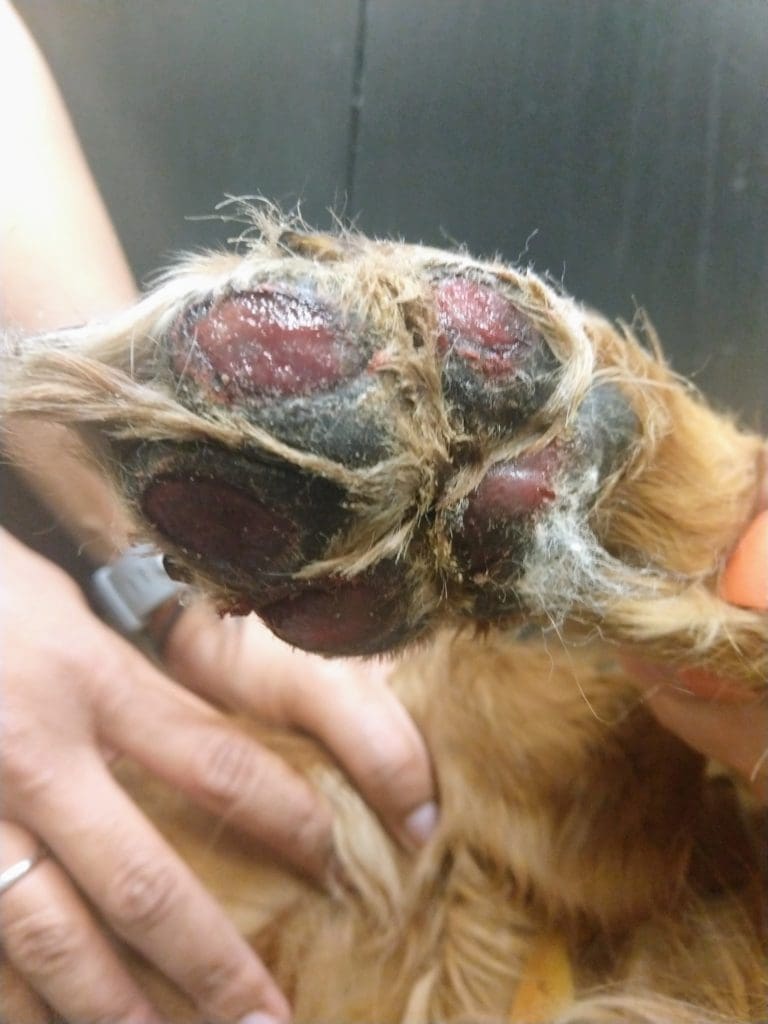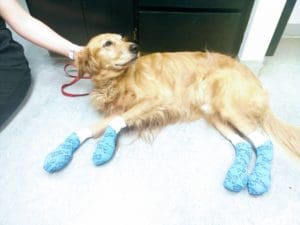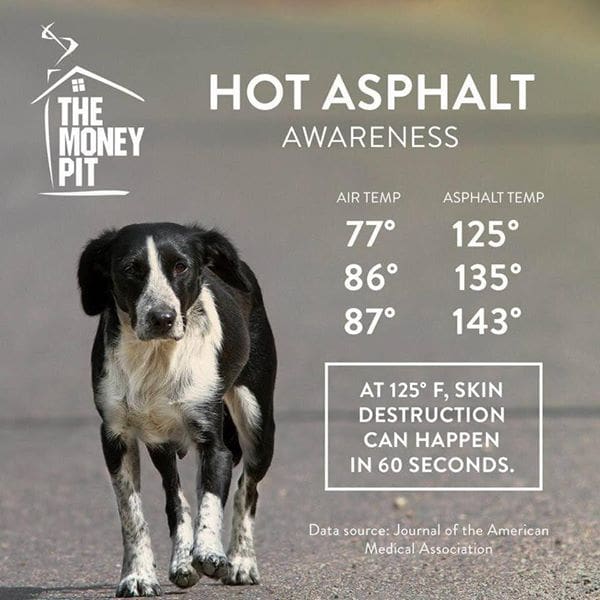Dogs need walks—for fitness, for mental well-being, and for bonding time with their people. In the summer, though, even the most fastidious of dog lovers can make one common and painful mistake: underestimating how hot summer pavement really gets. Since dogs don’t (usually) wear shoes, we must consider the pain and damage that can happen to their paws.

Photo by Medical Lake Veterinary Hospital
Animals are generally much more stoic about their discomfort than humans are. It’s up to us to stay engaged and alert. Dogs aren’t likely to show us that their feet are too hot until they are very hot. By then, some injury may already be happening.
Here’s a perfect example: Last summer, Medical Lake Veterinary Hospital in Washington posted photos of a Golden Retriever on Facebook that went viral. He had been on a one-mile walk with his owner on a hot day. His owner said he didn’t whine or limp on the walk, but later when they were home, they noticed that his paws had been badly burned. Scary to think how easily this can happen.
This comes down to a combination of air temperature and time of day. Since pavement cools some during the night, 80°F in the morning isn’t yet going to yield pavement temperatures that 80°F in the afternoon will. So how do you know for sure?
This applies to parking lots, too. It may seem like a super-fast trip into your local pet store with your pup, but hot is hot! Do a check, and take the long, shady route into the store if there is one. Further, in extremely hot weather, even synthetic grass like AstroTurf or light-colored concrete can be painful.

Photo by Medical Lake Veterinary Hospital
